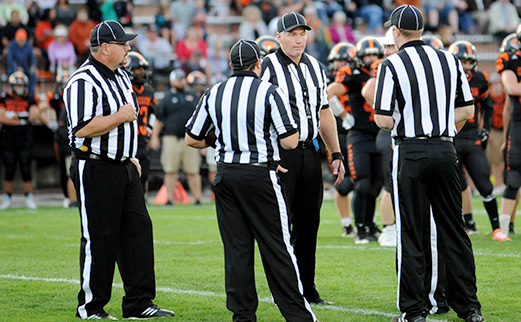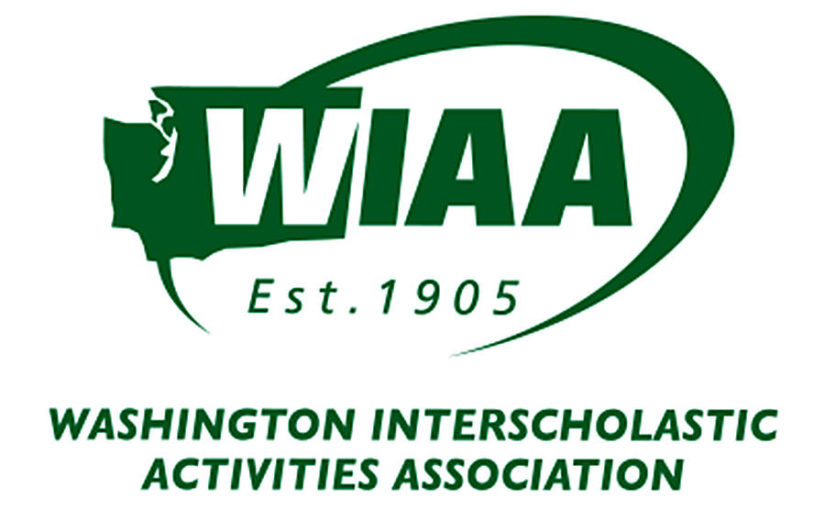Illinois school renovates aging gymnasium
All playing surfaces have their breaking point, and last year the gymnasium at Williamsville High School (Illinois) finally reached its own.
It didn’t come as much of a surprise. The complex was built nearly 40 years ago and the floor had never been replaced, so it was only a matter of time.
 Athletic Director Adam Eucker started to notice major problems right before the start of the 2013-14 basketball season. The floor was warped in some areas, buckled in others, but contractors were able to patch it up so the teams could make it through the season.
Athletic Director Adam Eucker started to notice major problems right before the start of the 2013-14 basketball season. The floor was warped in some areas, buckled in others, but contractors were able to patch it up so the teams could make it through the season.
After that, the real work would be done.
“The floor had never been replaced, and you know as well as I do the life of a gym floor is maybe 25 years if you’re lucky,” Eucker said. “We knew going into this year that we had to get this fixed. There was no point in putting Band-Aids over it. We needed to have a new surface on there.”
Williamsville High School doesn’t have the luxury of wealthy donors or multi-million dollar athletic budgets. The project, priced at around $500,000, will be paid for over 10 years. The program was able to receive some grant money, but the expense was a big one for a school that’s already grappling with education funding cuts at the state level.
Looking at the gym today, it’s difficult to argue the school didn’t get the most for its money. The floor has a “timeless” look that surprisingly clean. Most gym floors are cluttered with lines for multiple sports, but Eucker and others in the athletic department were able to choose colors that make the lines difficult to notice when you’re sitting high in the bleachers.
Midcourt, which was once occupied by a simple yellow circle, now displays the program’s logo — a simple yet essential addition to a program that wants to convey its pride in athletics.
Almost as remarkable as the final product is how Eucker and project leaders helped make it happen. Spending $500,000 doesn’t get schools a whole lot these days, but the program took every opportunity to cut costs, both short and long term.
In addition to replacing the floor, the gym needed new bleachers. Instead of paying thousands for their removal, the school worked with an organization that would extract them for free in exchange for the steel and wood pieces. The fragments will be used to make school desks for those that need them.
The gym floor was installed with a unique system that automatically triggers fans when it detects moisture at the surface. The lights are motion sensitive and shut off about 20 minutes after the last person leaves.
The new lights also allow Eucker to liven up the game day experience. Player introductions are often done in darkness and over music as a spotlight shines on each athlete when their name is called.
That’s something Williamsville couldn’t do before because it would have taken at least two minutes for the lights to come back on.
“My philosophy is I’m going to try and make this the best atmosphere as possible so it’s exciting for fans and players,” Eucker said. “I hate going to places where the atmosphere is just dead. That’s one of the biggest things I hate as a fan and A.D.”
Music is part of that atmosphere, and the gym’s new layout has a mezzanine just for the school’s band. Eucker recalls a time last year when the band had to leave the stands after the first quarter of a regional championship basketball game to make room for the hordes of fans. It’s something he wanted to make sure didn’t happen again, so he helped give the band its own space.
“They do so much for us in terms of creating the atmosphere for football and basketball games and pumping up the crowd,” he said. “We wanted to recognize them and give them a spot where they can shine and do what they do.”
As with most construction projects there are going to be obstacles, and for Williamsville it was all about timing.
The renovation started in the middle of May, and Eucker hoped it would be finished in time for the volleyball opener in late August. There were some delays in making the gym accessible under the Americans with Disabilities Act, so the volleyball team was forced to play its first three home games at the junior high.
Eucker wanted to unveil the gym to the public at one special event, but it wasn’t ready until late September. By then teams had already practiced there, students used it for physical education and the volleyball season was well underway.
“We tried to make it as big of a deal as possible, and we let the press know and they came and did some stories on it,” Eucker said.
Eucker admits the project was stressful at times and exciting at others. There were tasks like choosing a new scorers table that he was excited to be a part of, but then there were the everyday headaches that come with capital projects. For the most part, those responsibilities were out of his hands.
Eucker is complimentary of the project manager who oversaw the day-to-day operations. Some schools rely heavily on their athletic directors to coordinate capital projects, but Eucker recommends athletic administrators lean on projects managers whenever possible.
“That’s not our area of expertise,” he said. “(Project managers) know how to handle bids and all of that. That was a big weight off my shoulders because I didn’t have to worry about doing that stuff plus getting all my other fall sports ready.”
Eucker also stresses the value in transparency with projects like this. He used social media to provide progress reports on construction every two weeks. He also posted pictures and gave updates through a podcast, which he continues to host each week with one of the school’s former coaches.
No other major renovations are planned for the foreseeable future, but Eucker hopes to one day add reserve seating to the football stadium. The public isn’t quite ready to support that project, but the gymnasium was another story.
Williamsville finally has a brand new home, and the community couldn’t be happier.
“We held it off for as long as possible, but it was getting to a point where it was a safety issue,” Eucker said. “We wanted to be able to provide not only he best athletic facilities but the best educational facilities.
“When you have a good facility plan and you have good teams with success, people appreciate when you go and do things like this.”





